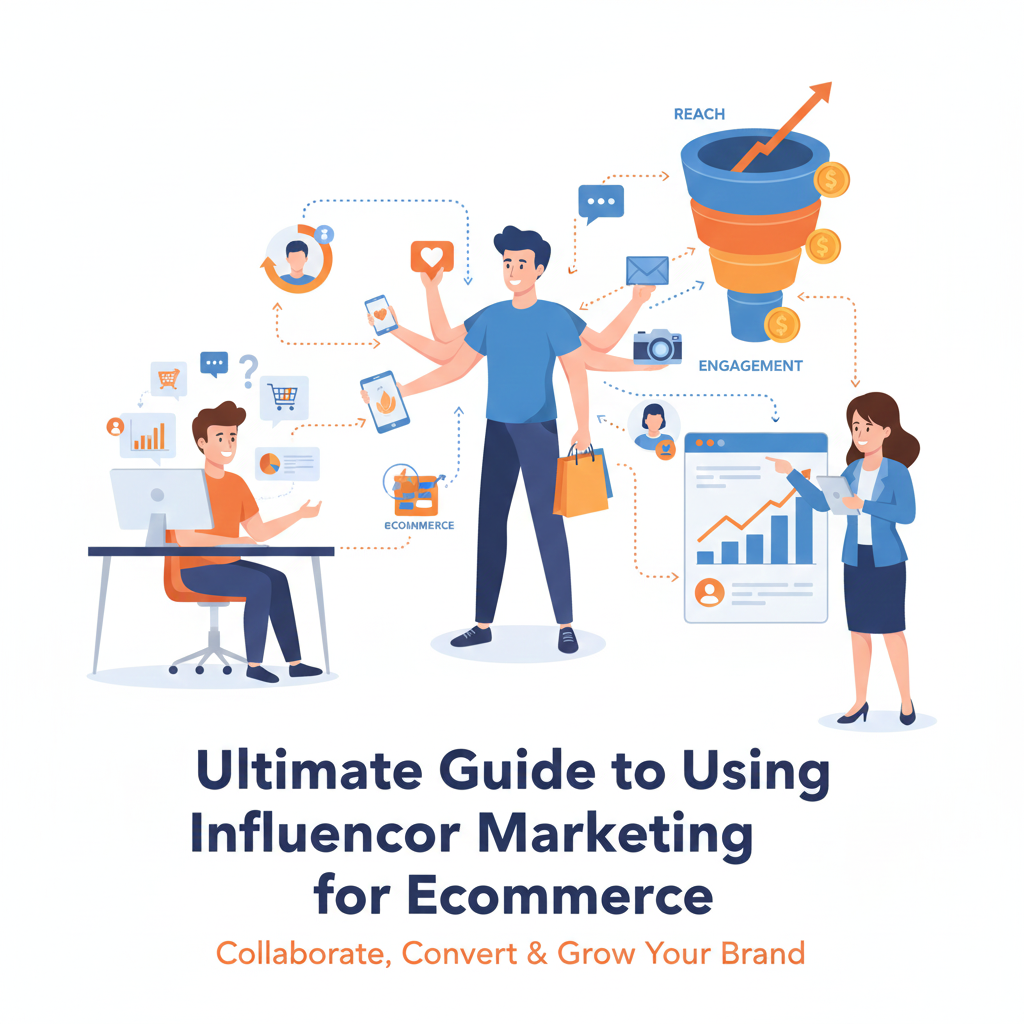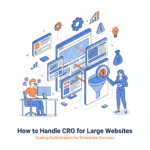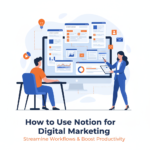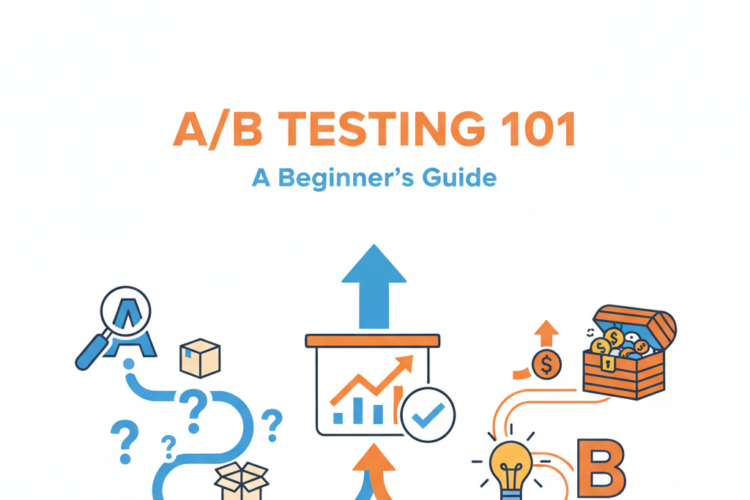
The Ultimate Guide to Using Influencers for eCommerce
Introduction
The eCommerce landscape is more competitive than ever. With ads becoming more expensive and customers developing “banner blindness,” traditional digital marketing methods no longer guarantee sales.
Enter influencer marketing — one of the most powerful growth channels for eCommerce brands in 2024 and beyond.
Influencers help brands:
Build trust and credibility faster than traditional ads
Generate high-quality traffic and conversions
Increase brand awareness and social proof
Create authentic user-generated content (UGC)
Drive long-term brand loyalty
This guide breaks down everything you need to know about using influencers to grow your eCommerce brand — from strategy and outreach to platforms, contracts, content, measurement, and scaling.
1. What is Influencer Marketing for eCommerce?
Influencer marketing involves partnering with social media personalities (influencers) who have built trust and engagement with a target audience.
For eCommerce, influencers play a vital role in introducing products, driving traffic, and boosting conversions through authentic recommendations.
Instead of pushing traditional ads, influencer marketing focuses on word-of-mouth 2.0 — real people sharing genuine experiences with your products.
2. Why Influencer Marketing Works So Well for eCommerce
Influencer marketing bridges the gap between social proof and purchase intent. Here’s why it works:
2.1. Trust and Authenticity
Consumers trust recommendations from real people more than from brands.
According to Nielsen, 92% of consumers trust influencer opinions over ads.
2.2. Visual Platforms Drive Sales
Platforms like Instagram, TikTok, and YouTube are visual-first — perfect for showcasing products in use. Seeing someone use your product triggers desire.
2.3. Micro-Targeting Power
Influencers often have niche audiences (beauty lovers, fitness fans, gamers, pet owners). Partnering with the right influencer gives access to highly relevant buyers.
2.4. SEO & Social Signals
Influencer-generated content increases brand mentions, backlinks, and search visibility, indirectly boosting SEO.
2.5. Conversion Power
Influencers can drive instant sales through discount codes, affiliate links, or social commerce features like Instagram Shop or TikTok Shop.
3. Types of Influencers (and Which Are Best for eCommerce)
| Type | Followers | Best For | Typical Cost | Pros | Cons |
|---|---|---|---|---|---|
| Nano Influencers | 1K–10K | Local or niche promotion | Free–$100 | High engagement, authentic | Limited reach |
| Micro Influencers | 10K–100K | Targeted product launches | $100–$1,000 | High engagement, affordable | Smaller audience |
| Mid-Tier Influencers | 100K–500K | Brand awareness | $1,000–$5,000 | Balanced reach | Costlier |
| Macro Influencers | 500K–1M | Large campaigns | $5,000–$20,000 | Big reach | Lower engagement |
| Mega/Celebrity Influencers | 1M+ | Massive brand visibility | $20,000+ | Huge reach | High cost, lower trust |
💡 Best for eCommerce:
Start with micro and nano influencers — they deliver authentic engagement, better ROI, and more targeted results.
4. Choosing the Right Influencer for Your eCommerce Brand
Step 1: Define Your Goals
Ask yourself:
Do I want sales or brand awareness?
Am I targeting a new market or re-engaging existing ones?
Do I need content or traffic?
Step 2: Identify Your Ideal Audience
Know your buyer persona — age, location, interests, values, spending habits.
Step 3: Find Influencers That Match
Look for influencers whose followers overlap with your audience.
Tools like Upfluence, HypeAuditor, BuzzSumo, and Heepsy help filter influencers by niche, engagement rate, and demographics.
Step 4: Analyze Metrics
Before partnering, evaluate:
Engagement rate (ER) = (Likes + Comments) / Followers × 100
Follower authenticity (avoid fake followers)
Content quality and tone
Audience demographics (age, gender, country)
Past brand collaborations
Step 5: Check Brand Fit
Make sure their values, tone, and content style align with your brand. Authentic alignment leads to organic promotion.
5. How to Find and Contact Influencers
Option 1: Manual Search
Use social platforms’ search functions or hashtags:
#ad #sponsored #unboxing #giftedby
Niche hashtags like #veganbeauty or #homedecorfinds
Option 2: Influencer Platforms
Use platforms to simplify outreach and management:
Collabstr
Aspire.io
Infludata
Tagger
Modash
Option 3: Agencies
Influencer marketing agencies help with strategy, discovery, and campaign execution.
Crafting an Influencer Outreach Message
Keep it short, personal, and clear:
Subject: Collaboration Opportunity with [Brand Name]
Hi [Influencer’s Name],
I love your content around [niche/product type]. I think your audience would really connect with our [product].
Would you be interested in a collaboration? We’d love to discuss details like creative freedom, compensation, and campaign goals.Best,
[Your Name]
[Brand Name]
6. Collaboration Models for eCommerce
Sponsored Posts – Pay influencers for content featuring your product.
Product Seeding/Gifting – Send free products in exchange for honest reviews or posts.
Affiliate Programs – Pay a commission for each sale via influencer’s unique link.
Brand Ambassadorships – Long-term partnerships where influencers become faces of the brand.
Giveaways & Contests – Partner with influencers to host giveaways that boost engagement.
Content Licensing – Reuse influencer content for paid ads or website.
Co-Branded Products – Create special edition items with influencers (e.g., “Influencer x Brand”).
7. Creating Influencer Campaigns That Drive Sales
Step 1: Define Campaign Objectives
Examples:
Product launch awareness
Seasonal sale promotion
Holiday gifting campaign
Affiliate revenue growth
UGC collection
Step 2: Set KPIs
Measure success through:
Engagement rate
Clicks or swipe-ups
Conversion rate
Sales from promo codes
Cost per acquisition (CPA)
Step 3: Give Creative Freedom
Allow influencers to express your brand in their own voice. Overly scripted content feels inauthentic.
Step 4: Use UGC Across Channels
Repurpose influencer content on:
Product pages (social proof)
Paid ads
Email campaigns
Social media
Step 5: Track Everything
Use:
UTM parameters to measure traffic in Google Analytics
Unique discount codes to track sales
Affiliate dashboards (e.g., Refersion, ShareASale)
8. Influencer Marketing for Different eCommerce Niches
| Niche | Platform | Ideal Influencers | Content Ideas |
|---|---|---|---|
| Fashion | Instagram, TikTok | Outfit stylists, lifestyle vloggers | Try-on hauls, OOTD videos |
| Beauty | YouTube, TikTok | Makeup artists, skincare reviewers | Tutorials, transformations |
| Fitness | Instagram, YouTube | Trainers, health coaches | Product reviews, challenges |
| Tech/Gadgets | YouTube, Twitter | Tech reviewers | Unboxing, comparison videos |
| Home Decor | Pinterest, Instagram | Interior designers | Room makeovers, DIY projects |
| Food & Beverage | Instagram, YouTube | Food bloggers | Recipe videos, taste tests |
| Pet Products | TikTok, Instagram | Pet owners | Funny pet videos, unboxing |
9. Measuring ROI of Influencer Marketing
Key Metrics:
Engagement Rate – Likes, comments, shares
Reach & Impressions – How many saw the post
Traffic Generated – Track via Google Analytics
Sales Conversions – From promo codes or affiliate links
Cost per Acquisition (CPA) – Total spend ÷ Conversions
Return on Ad Spend (ROAS) – Revenue ÷ Ad Spend
Formula Example:
If you spend $2,000 and make $8,000 in sales →
ROAS = 8,000 / 2,000 = 4x
10. Legal and Compliance Considerations
Influencers must disclose sponsorships using hashtags like #ad, #sponsored, #gifted.
Follow FTC (US), ASA (UK), and local disclosure rules.
Draft contracts covering:
Content rights
Deadlines
Payment terms
Usage rights
Exclusivity clauses
11. Scaling Influencer Marketing
Once you find what works:
Build long-term partnerships with top performers.
Create an influencer ambassador program.
Invest in UGC amplification — run paid ads using influencer videos.
Automate tracking and communication using tools like GRIN, Traackr, or Aspire.io.
Combine influencer campaigns with email automation and retargeting to increase conversion rates.
12. Future Trends in Influencer Marketing for eCommerce
AI-Powered Influencer Discovery – AI will match brands with the most relevant creators.
Virtual Influencers – Computer-generated influencers are on the rise (e.g., Lil Miquela).
Live Shopping – Real-time influencer-hosted eCommerce events.
Nano Communities – Brands focusing on small, loyal audiences.
UGC-First Campaigns – Raw, authentic content outperforming polished ads.
Conclusion
Influencer marketing is not just about endorsements — it’s about building relationships, trust, and social proof that drive real eCommerce results.
When done right, influencers become extensions of your brand voice, helping you reach new audiences, boost conversions, and create a powerful emotional connection with your customers.
Start small, measure continuously, and scale what works — and soon, influencer marketing will become one of the most profitable and sustainable growth engines for your eCommerce business.
Author



